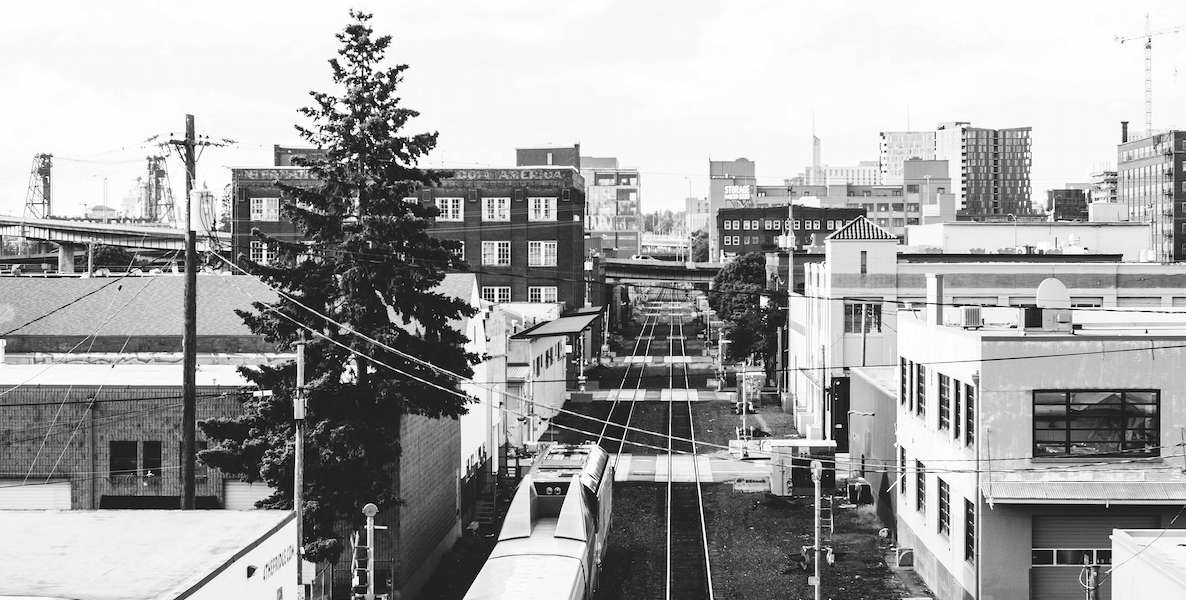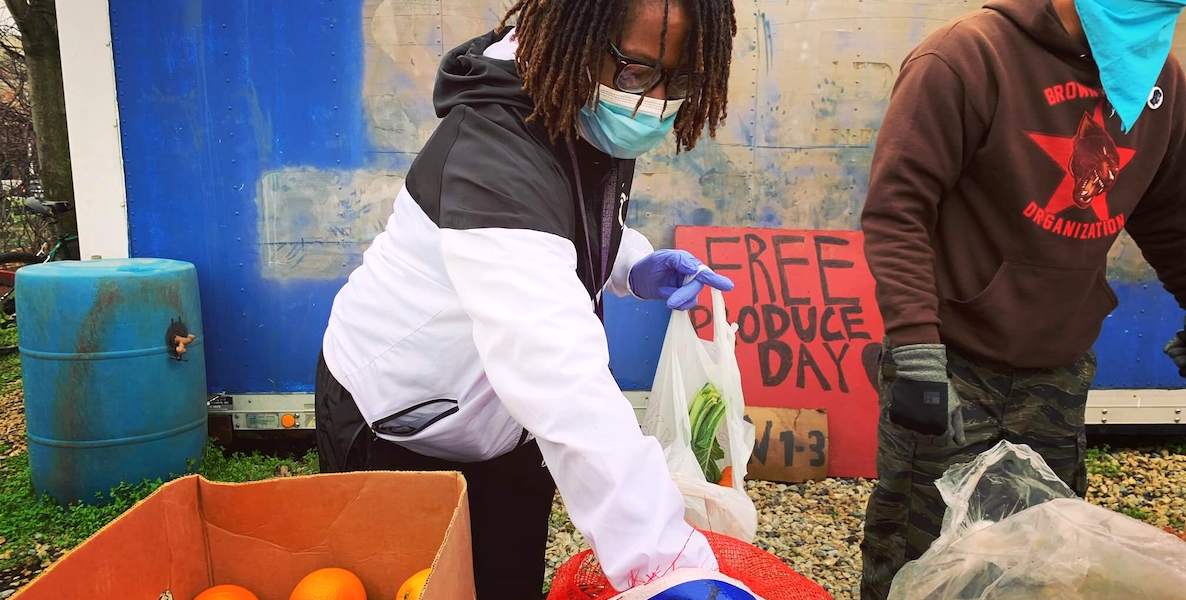To this story in CitizenCastLISTEN
Hope for a corona-free future—especially for communities of color disparately devastated by the pandemic—calls for a communal vision designed to directly address the so-called underlying health conditions that have been brought to the surface in the deadliest virus to infect America in over a century.
So much of the news reporting on the coronavirus and Covid-19 centers on the urgency of now: daily death totals, super-spreader events, hotspots and infection rates. Any early prognostications about the mitigation or resolution of the virus have been proven false in spectacular ways.
Our national Covid-19 death toll has topped 200,000. The United States has over 6,000,000 cases of coronavirus. Looking to our immediate past or our immediate future, the coronavirus’s grip on America is colder than Charlton Heston’s hands on a flintlock long rifle.
Here's the quick readShort on Time?
Led by a Black-owned and -operated investment company, TPP Capital Management Group, HTTP gestures toward a neighborhood utopia right in the heart of North Philadelphia—the Tioga-Nicetown or Nicetown-Tioga section of the city that rarely enters our local Overton window without the requisite narratives of urban blight and economic decline.
“Tioga is a fresh-food desert, 42 percent poverty rate, 18 percent unemployment rate. That’s actually before the pandemic,” says Hornstein. “43 percent of residents suffer from obesity; 45 percent have high blood pressure; 19 percent have diabetes. So, the social indicators of health are really bad.”
Late last month, a six-alarm fire, the largest fire that the city of Philadelphia has seen in at least three years, consumed a block-long building in the industrial section of Tioga. The fire consumed a warehouse on the 3300 block of Stokely Avenue. This particular block is not a part of the Healthy Town Tioga Project development design, but the news story reflects the kind of media coverage of Tioga that residents of Philadelphia have become used to over time. In Philly, Tioga has become synonymous with decline.
Imagine instead a community where a holistic set of sustainable wellness amenities are available in a mixed-income, walkable neighborhood designed to grow its own produce. An urban vertical farm provides groceries for a Reading Terminal-styled farmer’s market.
At the heart of this healthy utopia is a culinary center that teaches people how to prepare healthy foods and instructs them in all of the ways that wellness can be achieved through knowing what you put into your body. This is the vision of the Healthy Town Tioga Project.
The History of Tioga
The history of Tioga tells a complex (and interesting) story that is like so many other neighborhood stories in Philly. What we now know as Tioga was initially settled by, and named after, Kenderton Smith in 1820. Smith was a businessman and lawyer who also served as a colonel in the Pennsylvania Militia; this was the early part of the 19th century when militias actually served a constructive purpose. But in 1854, when the Tioga railroad station was built, the neighborhood was renamed Tioga, an Iroquois word that means “junction” or where a road or path forks.
In the halcyon days of Tioga, the neighborhood was a melting pot of early American immigrants, including Irish, Polish and Jewish families. At this point in our nation’s history Black people were enslaved as property and very few—even in the “liberal” north owned any actual property themselves.
This began to change by the 1960s as migration patterns found African Americans drifting away from the oppressively violent racism of the South in order to pursue elusive dreams of liberation in the North. This pursuit drove many African Americans to the City of Brotherly Love and the neighborhood of Tioga. Whether by unfortunate circumstances or intentional anti-development strategies, Tioga began its precipitous decline as African Americans moved in and white flight took flight.
Neighborhood industrial stalwarts like Midvale Steel wavered in the midst of the overall industrial shifts of the Philadelphia economy. Post-industrialism left gaping economic holes across the city and African-American families—mostly first-generation Philadelphians (at that time)—suffered the most in the new manufacturing-challenged economic environment.
Today, Tioga is over 85-percent Black. Jeff Hornstein, executive director of the Economy League of Greater Philadelphia, cites the community’s health care statistics to me from memory: “It’s a fresh-food desert, 42 percent poverty rate, 18 percent unemployment rate. That’s actually before the pandemic. 43 percent of residents suffer from obesity; 45 percent have high blood pressure; 19 percent have diabetes. So, the social indicators of health are really bad.”
Given the bleak reality of our everyday existence, our capacity to imagine a post-Covid-19 future is almost a radical political act. In this sense, the Healthy Town Tioga Project is afrofuturistic because it speculates about the possibilities of a future for a black community that is alive and healthy.
Each of these health indicators represent adverse health conditions under normal circumstances, but in the era of the coronavirus pandemic they are considered comorbidities: Anyone who has these issues/diseases and also contracts coronavirus will be much more likely to die from Covid-19. Even pre-coronavirus, Tioga was not a healthy town.
That’s Where the Vision of Healthy Town Tioga Project Comes In
The idea is to upend a neighborhood plagued by economic and health inequities, and innovate in a way that transforms the lives and social outcomes of its citizens. “Jumpstarting this amenity base for the neighborhood and the partnerships TPP has formed (including the Pennsylvania Horticultural Society) is the key. It’s comprehensive, but it all revolves around health and wellness,” says Hornstein.
Healthy Town Tioga Project is the vision of Anthony Miles, founder of TPP Capital Management, who is simultaneously pragmatic and optimistic about the potential of HTTP. “I call it a dream,” he says. It’s a dream based on years of planning from within and outside Tioga—but with little so far to show from it.
“One thing about Tioga is they’re all planned out, which means they don’t need another plan,” Miles says. “The City Planning Commission did a plan. The Community Design Collaborative did pro bono work to do a plan. They have more than enough plans. But what they’re missing is implementation of those plans.”
Under the Healthy Town Tioga Plan, TPP plans to develop 41 vacant pieces of land (within five blocks of Temple University Hospital) into a fully integrated health and wellness neighborhood. (The sites fall within two areas that are federal Opportunity Zones.) It will include retail and commercial spaces, street improvements, a job training center and over 1,400 residences, including housing for seniors, graduate students, health care and food entrepreneurs, as well as condos for middle-income service workers.
HTTP will also directly address health concerns in the area through a 139,000-square-foot health hub including a primary and specialty care clinic, an indoor vertical farm, a food and nutrition library, a community farmers market and a center for culinary medicine.
Support community-driven developmentDo Something
This month, TPP’s Real Estate Investment Fund launched a $100 million investment campaign for the initial phase of the project, which will be a $1 billion initiative in total, over the next decade.
“The infrastructure is already there,” says Miles. “You have Temple University Health System that goes from Broad and Allegheny up to Erie. They have 10,980 people that work there. We saw that as a plus. You have the Broad Street subway stop at Erie and Allegheny; you have the north station with Amtrak. You have all of that great infrastructure [in] the most transit-oriented neighborhood in the whole city.”
Our national Covid-19 death toll is approaching 200,000. The United States has over 6,000,000 cases of coronavirus. Looking to our immediate past or our immediate future, the coronavirus’s grip on America is colder than Charlton Heston’s hands on a flintlock long rifle.
Miles is a Navy veteran turned social impact real estate developer. His bona fides for Healthy Town Tioga Project rest largely on his track record proven through his development work in the Francisville neighborhood of Philadelphia.
Miles grew up there and just over a decade ago he partnered with the Francisville Neighborhood Development Corporation (through the 16th and Ridge Avenue Property Owners Association) to build the multi-family units at The Vineyards at 16th and Ridge).
“He did great work in Francisville,” says Hornstein, who used to live in the neighborhood. (Miles sits on the Economy League’s Board of Directors.) “He’s got a model that uses the private sector to subsidize itself to create workforce housing. And he’s got this serious commitment to health and wellness.” Which is why, according to Hornstein, important stakeholders, like Independence Blue Cross and the Pennsylvania Horticultural Society are committed to the vision of the Healthy Town Tioga Project.
A Focus On Community
As a social impact developer, TPP acknowledges that it cannot operate in a social or communal vacuum. Investors and stakeholders must also be committed to advancing the social, economic and health outcomes for the citizens of the neighborhoods within which the project has been proposed.
Despite conventional perceptions of real estate development in Philadelphia, a fair number of innovators have assumed the mantle of community-centered initiatives across the city.
Mosaic Development partners, founded in 2008, have invested over $100 million in North and West Philadelphia neighborhoods. Shift Capital has a similarly community-centered focus in its development projects in Kensington.
In this context, Miles’ TPP and the Healthy Town Tioga Project are part of a promising trend toward revitalizing Philadelphia in real ways that include the citizens of some of the most challenged Philadelphia neighborhoods.
For those still skeptical of these development projects and the specter of gentrification, Jeff Hornstein sees these challenges differently. “Philadelphia does not have a gentrification problem; we have a jobs and income problem. We don’t have an affordable-housing problem per se. We have too many poor people and too much substandard housing, and we have a situation in which developers tend to build new housing rather than rehabbing existing housing.”
Pela McFee, a long time Tioga resident and a former leader in the Tioga United community organization is measured but optimistic about the future of her beloved neighborhood.
When McFee isn’t spending her time with her family she volunteers at the Tioga Hope Garden on weekends. Tioga Hope Garden never received the full municipal support promised for these kinds of initiatives in the city, but Tioga United and members of the Tioga neighborhood made it into a community green space despite the bureaucratic obstacles that they initially faced.
This kind of “get-it-done” initiative seems to run through the stakeholders and others affiliated with the Healthy Town Tioga Project.
community-centered developmentRead More
The fact that a Philadelphia development project was put “through the ringer” by the community organization most impacted by the proposed plan is, in and of itself, a forward-thinking prospect for Tioga’s post-Covid-19 future.
McFee has stepped away from Tioga United for personal reasons not at all related to HTTP, but she still has faith in it and remains invested in the outcomes of the project. “It will be a benefit for our community. We’ll have a seat at the table and a piece of the pie,” she says.
Healthy Town Tioga Project emerges as a glimmer of hope and a model for the possibilities of a post-Covid future that embraces equity, a post-Covid future that directly confronts the health disparities highlighted through the nadir of the pandemic.
According to Miles, the pandemic has had an impact on HTTP, but that impact may seem counterintuitive. “We’ve been at this way before the pandemic because we understood what the health disparities were before the pandemic,” he says. “The only thing the pandemic did was put a gigantic spotlight on these issues. It also caused everyone to stop with their busy schedules to hear the messaging about how Black people are the most vulnerable population health-wise.”
Miles says that conversations with municipal and financial stakeholders are more engaged. “They’re listening now; the whole country is listening.”
TPP projects a 400-percent “social return” on its investment: For every dollar invested in HTTP, Miles says he estimates $4 will come back to the community in the form of new social amenities and health/wellness resources. For individuals, TPP claims community members will see an annualized benefit of almost $6,000—in a community where the median income is about $17,500.
Miles accounts for this by pointing to a community-based lifestyle that emphasizes proactive engagement with health and wellness through nutrition and amenable access to healthy foods and wellness services.
Of course, the history of development deals are replete with bold promises of economic transformation that never come to fruition. And maybe HTTP seems similarly farfetched to those who have been paying attention to real estate and economic development across the city of Philadelphia. It might be.
But given the bleak reality of our everyday existence—an unchecked pandemic and the recurring specter of brutal racial inequities—our capacity to imagine a post-Covid-19 future is almost a radical political act in itself. In this sense, the Healthy Town Tioga Project is afrofuturistic because it speculates about the possibilities of a future for a Black community that is alive and healthy. Imagine that.
James Peterson is a writer, educator and consultant, and is host of Tonight on WURD, a nightly news program on WURD, Philadelphia’s only independently Black-owned radio network. The Color of Coronavirus series is supported by the Pamela and Ajay Raju Foundation.
Illustration by Noa Denmon Healthy Town Tioga Project













